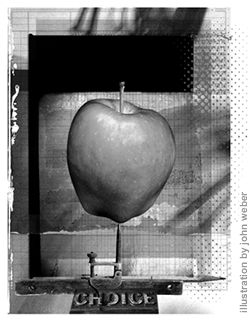 |
Three years ago I visited an alternative high school in New England. It is a terrific place-small, personalized, staffed by deeply committed teachers, and attended by students who seem to approach learning with enthusiasm. Nearly all of its graduates go on to college. Everyone affiliated with the school loves it. I wish more places like it existed across the country.
But I wouldn’t want to teach there.
This school is avowedly progressive, with a project-based curriculum. Each student’s course of study is completely individualized, developed with the help of a teacher advisor. Students spend half their academic week in internships outside the school building. The atmosphere of the school is therapeutic. While I have come to recognize the value of such schools for some students, parents, and teachers, I continue to subscribe to the ideal of a humanistic liberal arts education that is highly prescriptive and, while global in scope, grounded in the intellectual, aesthetic, and moral traditions of western civilization.
Such an education exposes students not only to what Matthew Arnold famously termed “the best that has been thought and said,” but also develops in them a valuable form of critical consciousness that is difficult to acquire elsewhere in contemporary American society. I am the product of a humanistic education, and I am grateful to be the kind of person it has made me. It inspires my work as a citizen and parent. It also sparked my desire to become a teacher and informed what I did in the classroom. My life would be greatly impoverished without it.
My progressive colleagues are equally passionate about their commitments to education. And I am grateful for that, because students benefit from passionate educators with a clear vision for schooling. We are all better off as allies working on behalf of children and a better society than we are as rivals slandering and sabotaging one another’s work. This realization has led me to another: that our current system of common schooling makes alliances between progressives and traditionalists impossible.
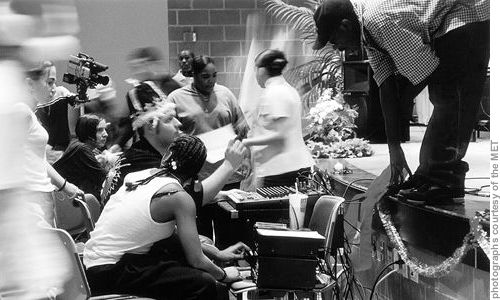 |
| Students at the Metropolitan Career and Technical Center (the “Met”) in Providence pursue individual projects built around their interests, in an environment notably less formal than that found at Harlem’s Frederick Douglass Academy. Despite these differences, both schools graduate students who are literate, competent citizens.
|
Why Choice Is Good for Teachers
At a certain level, I have much in common with my progressive colleagues. We all want students to read well, think critically, and live happy, prosperous lives. Each of us has credible conceptions of democracy, freedom, and achievement. We all believe in civic education that urges students to contribute to the common good. And we agree that schools should be challenging, personalized, and staffed by committed teachers who inspire and motivate students. But our understandings of what those things actually require of schools differ profoundly. Our definitions of democratic freedom and how to achieve it derive from different intellectual and moral traditions, as do our beliefs about what’s worth learning, what counts as achievement, and, most important, what kind of school is best for children and society.
The differences go deep. Pedagogical and curricular beliefs are extensions of more comprehensive philosophical or religious doctrines that are in turn colored by ideological ones. Educational doctrines reflect metaphysical, epistemological, ethical, and sometimes spiritual commitments that powerfully shape one’s identity and understanding of history and society. This is why-as any student of the history of American education knows-educators have never agreed on what knowledge should be taught or how best to teach it.
For example, if I believe that human societies are inherently amoral, unjust, and governed by powerful elites who rig the economic, political, and educational game in their favor, then I might endorse the late Brazilian social activist Paulo Freire’s “pedagogy of the oppressed,” wherein students are taught to view social relations in terms of power and domination. I might train my charges in practices of “resistance” rather than making them memorize multiplication tables.
Imagine, however, that I believe that the liberal-republican nation-state represents an important advance (however imperfect) over previous types of regimes. Imagine that I also believe in the power of meritocracy, rather than inherited wealth or brute force, as a means to improve one’s station in life. Then I might, like E. D. Hirsch Jr., a University of Virginia scholar and author of Cultural Literacy, view mastery of traditional academic subject matter as supremely important to society’s least advantaged and to social progress in general. Both positions have the best interests of children sincerely in mind. Both have a reasonable conception of justice, democracy, and citizenship. But because the underlying philosophical and ideological bases differ fundamentally, each position interprets these mandates in ways that imply radically different kinds of schools.
Given these profound disagreements, I have come to believe that educators would derive more satisfaction from an education system that gave them greater freedom to create schools according to their pedagogical principles, in recognition of the powerful influence that philosophical, ideological, and sometimes spiritual worldviews have over those principles. Such a system would entail allowing parents to choose the schools their children will attend, because the many different kinds of schools established under such an arrangement would correspond to the values and needs of educators, students, and parents. In short, a system of school choice would prove more satisfying for educators because it could foster the creation of cohesive learning communities based on common beliefs about teaching and learning.
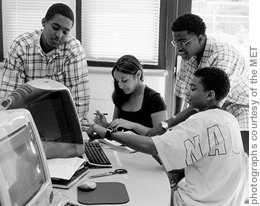
Many Ways to Be Good
Despite moving toward a greater appreciation for pluralism in other spheres of life, American educators and policymakers persist in their attempts to impose a uniform doctrine of education on the entire institution of schooling. Consider the attempts to develop national or even state-level content standards. Or the efforts to establish a uniform canon of “best practices.” Reformers of all stripes seem to want to create what educational historian David Tyack has termed “the one best system.” Yet as Tyack’s Stanford University colleague Larry Cuban has recently argued, there are many different ways for a school to be “good.”
For instance, Frederick Douglass Academy in Harlem, the Metropolitan Regional Career and Technical Center (“the Met”) in Providence, and the Oakland School for Social Justice and Community Development are all very different urban high schools that enroll mostly low-income black and Hispanic students. Students at Douglass wear uniforms and study a traditional college preparatory curriculum, whereas students at the Met pursue individual projects built around their interests in an environment notably less formal than found at Douglass. The School for Social Justice, meanwhile, comes closest to Freire’s ideal. There students take courses in “culture and resistance” where they learn about “systems of oppression” and are taught to organize political action in their communities. Despite these differences, all three schools graduate students who are literate, competent citizens. And all three outperform nearby comprehensive high schools enrolling similar student populations. In short, students seem to thrive in a broad range of schools.
The reason is that beneath the doctrinal conflicts lies a set of characteristics that all good schools have in common. According to Cuban, “They have clear and shared purposes; they believe that all children can learn; each school staff has developed a working culture that embodies these common beliefs and enjoys collective action; and parents are deeply involved with the school. Thus very different concepts of schooling can be embraced without sacrificing the core purposes of public education.”
Variations on Cuban’s list of attributes are found widely in accounts of successful schools. At this level of analysis, educators enjoy notable consensus. Both Hirsch and Freire espouse Cuban’s principles. Each created excellent schools that instantiated those principles in different ways. But try to make their respective disciples work together in the same school, and every one of those principles would be undermined.
Every zoned public school houses a jumble of competing educational doctrines. In a typical school, partisans coexist warily and resent each other’s influence. The traditionalists lament the lack of rigor, the progressives complain about the amount of required curriculum coverage, and the Freireans scoff at the traditionalists’ easy absorption of women authors and black inventors. Genuine collegiality grounded in a set of shared norms and standards of practice is nearly impossible under these conditions. One reason for the difficulty of comprehensive school reform is that any attempt to impose coherence inevitably generates resistance among a plurality of the faculty. To be sure, some resist out of sheer lassitude or intransigence. But others resist because they hold contrary beliefs about their vocation as educators.
To keep the peace, schools often resort to giving teachers as much latitude in their classroom practices as possible. Hence arises the oft-cited isolation of teachers and the difficulty of forming genuinely collegial school cultures. If educators instead could come together under the umbrella of a particular educational doctrine, one of the chief barriers to cohesive schools would evaporate. And the way to do this is to allow teachers (and parents and students) to form-within the bounds of liberal-republican and professional consensus-schools that reflect their own philosophical and pedagogical convictions.
This argument is admittedly speculative. However, consider a historical analogy: the process by which western societies first came to accept pluralism, however grudgingly, as a fact of life, and eventually to regard tolerance as a cherished public value. Before the 17th century, the notion that political authority and social order could exist without an established church was unthinkable. Clearly, secular authority required divine sanction. It took the Protestant Reformation and more than a century of bloody, destructive conflict to convince people that this belief had become a source of political and social disorder. Religious tolerance emerged as a pragmatic attempt to stop people from killing one another over matters of doctrine and faith. Only later did philosophers begin to theorize tolerance as a positive good in its own right. Over time, most religious sects thrived as voluntary associations, and they eventually came to recognize their common aims and interests. Catholics and Protestants, Anglicans and Baptists-not to mention Buddhists and Muslims-now coexist amicably in a way unimaginable to their 17th-century ancestors. And all but the most extreme sects contribute to, rather than threaten, the common civic culture.
The analogy isn’t perfect. But it at least suggests that we may have less to fear from school choice than from the continual struggle to establish one educational “faith” through the vehicle of the common school. Sectarian warfare among Christians obscured much that competing groups held in common as Christians. The untangling of church and state paved the way for interfaith cooperation among religious sects. Similarly, giving educators more freedom to practice their sectarian creeds could heal doctrinal rifts and enable greater professional solidarity. It could also prove energizing. Religious sects thrived once their proselytizing energies were set free. The same could happen to teachers. After all, who in contemporary secular society feels the proselytizing impulse more strongly than educators?
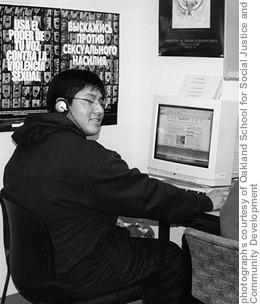 |
| The Oakland School for Social Justice and Community Development comes closest to Paulo Freire’s ideal. There students take courses in “culture and resistance” where they learn about “systems of oppression” and are taught to organize political action in their communities.
|
Enhancing Professionalism
For the better part of the past century, educators have sought to be recognized as professionals. The idea that the education system, and the nation, ought to embrace many different pedagogical approaches may seem to undermine this aspiration, since this effort has rested, at least in part, on the assertion that educators and educational researchers possess a scientific knowledge base and expertise that distinguishes them from laypersons. But, as Cuban suggests, accepting many different manifestations of teaching as “good” does not mean denying any empirical basis for what constitutes sound teaching. What educators need is a conception of teaching that lies somewhere between the medical model espoused by advocates of professionalism and the belief that anyone with a bachelor’s degree and no criminal record is qualified to teach. Craft trades and ministries point toward a middle way that, though less prestigious than medicine, could actually enhance the profession by better reflecting the work teachers do instead of arrogating to itself a status that strikes many noneducators as presumptuous and self-serving.
School choice actually has the potential to enhance professionalism and collegiality among teachers by allowing them to form communities of practice around some core conception of the pedagogical good. At the school level, enabling educators to establish their own schools of choice would make it possible for them to agree on principles, practices, and strategies for improvement. Choice likewise provides a substantive basis for parental and student buy-in. All would belong to a school with a shared sense of mission, organized according to a common set of values. Right away, two key features of strong schools-quality teachers and engaged students and parents-can more easily gain a foothold.
At the community level, support for schools might also be enhanced under a regime of public school choice, because fewer people would feel compromised, silenced, or alienated in an environment where well-intentioned school officials are forced to accommodate conflicting constituent demands and wind up doing so in ways that favor the most vocal, affluent, or well-organized. Choice alone would not be enough. Localities would also need to cultivate a spirit of tolerance so that certain kinds of schools were not prevented from opening because of local majority bias. Majority rule has the potential to shift the current acrimony to slightly different terrain while continuing to hold children and their families hostage to doctrinal zeal.
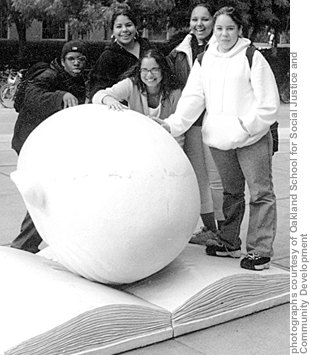
More than Just Market Forces
Note that my argument for choice has not relied on the virtues of markets or the rights of parents. Though in effect schools would compete with one another and parents and students would have more freedom to choose among schools, there is at least one important difference. The difference lies in the conceptualization of schooling itself. While the market and parental-rights models tend to conceive schooling as a service commodity, with educators as “providers” and families (and businesses) as “clients” or “consumers,” the model sketched here follows James Davison Hunter, author of The Death of Character, and Robert J. Nash, author of Answering the Virtuecrats, in conceiving of schools as moral communities.
In this framework, the philosophical, ideological, or spiritual outlooks that drive a person to establish or attend a certain kind of school are not chosen in the same way that one chooses a dentist or soft drink, but reflect his or her identity and conception of what kind of life is most worth living. It conceives schooling as an institution more like a church, a profession, or a branch of the military, where one can choose to join or leave, but the choices reflect deeper convictions rather than mere consumer preferences.
This way of understanding schooling and choice also makes it possible for schools to exercise normative authority-to impose standards and expectations-in guiding children’s development. As with churches, the professions, and the military, students are socialized into a culture and are expected to master its standards of excellence and ethics. It is not that the market and parents’ rights models preclude this understanding of what a school is and does; it is just that they provide little conceptual basis on which schools can assert normative authority or make legitimate demands on students, parents, or other constituents. After all, there are no consumer obligations, only consumer rights.
This talk of schools as moral communities exercising “normative authority,” taken to its logical extreme, can sound scary, conjuring images of publicly supported KKK schools, madrasas, and militant ethnonationalist or fundamentalist schools. But I think this fear underestimates the strength of the political and professional consensus we do enjoy. In addition to the common values identified by Cuban, most conscientious American educators and citizens share certain aims, values, and standards of practice that, while they allow for a wide range of conflicting interpretations, nonetheless set limits on what kinds of schools could be authorized to receive public funding. What reasonable American does not believe that students should be taught to read, write, and use their minds well? That they should acquire virtues of justice, tolerance, patriotism, and cooperation with people different from themselves? That they should develop competence as citizens of a liberal-republican polity? Though educators and the public will never agree on precisely what “citizen competence” demands of schooling, the best strategies for teaching reading, or the most appropriate curriculum for cultivating critical thinking or a sense of justice, most will agree that schools that teach or practice racism, deny boys and girls equal opportunities, or neglect mathematics do not merit public support.
Of course, many difficult issues would require political deliberation to resolve. For instance, academic and civic standards would still need to be established. (Should we permit schools that teach creationism or Afrocentrism?) “Reasonable pluralism” would have to be defined. (Is it reasonable for a school’s dress code to require girls to wear chadors?) Assessment systems would need to be devised that preserved rigor without favoring some kinds of schools over others. Public information and transportation systems would need to be established. Regulations and incentives would need to ensure that all families had full access to high-quality schools. Decisions would have to be made regarding whether schools could form with the implicit (or express) purpose of appealing primarily to a single ethnic or religious group. Labor and certification issues would need to be addressed, new organizational networks formed, new ways of delivering electives, sports, and extracurricular activities developed. And so on.
These and many other problems of principle and practice would remain to be solved. But if designed correctly, a system of choice that honored the convictions of educators (and other constituents) would take many of the most intractable issues off the table, especially those that touch us most closely-disagreement over curriculum, pedagogy, and standards of personal comportment. The liberal arts school could coexist with the project-based school, the JROTC academy with the school for peace and social justice, the school that requires uniforms with the one that lets students collectively determine the dress code from year to year. Once all sects feel secure in the practice of their faith, could a profession-wide esprit de corps be far behind? Could Hirscheans, Freireans, and other sectarians stop fighting one another and learn to fight together on behalf of schools and children? We won’t know until we call a truce in the pedagogical holy wars.
— David J. Ferrero, a former public school teacher, is the director of evaluation and policy research at the Bill & Melinda Gates Foundation.


